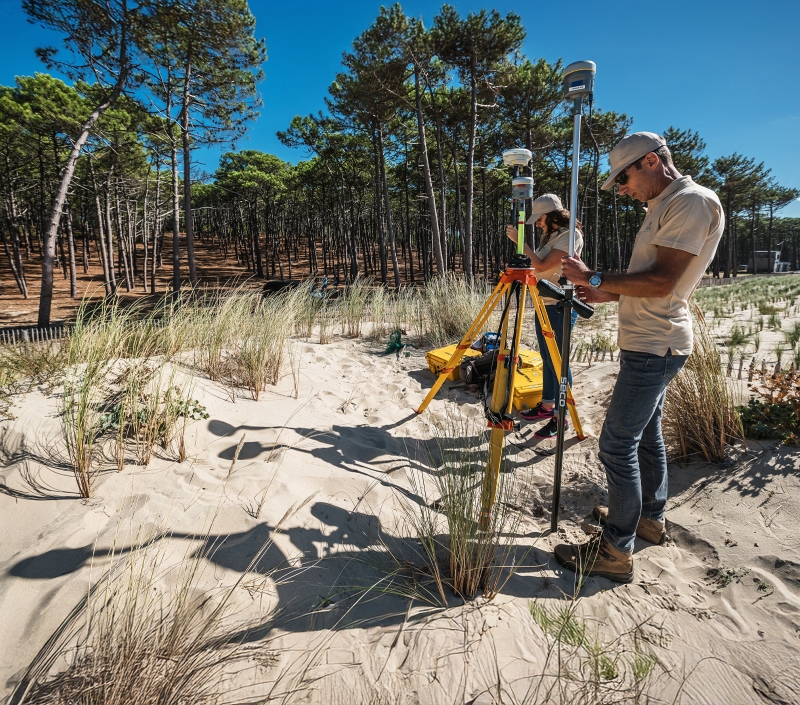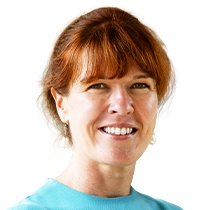Shoreline monitoring measurements at La Teste-de-Buch, Gironde. © Observatoire de la Côte Aquitaine / Com’ by AVM
“Our ability to fully play the role of a major national geological survey is capital. This is what will ensure the long term trust placed in us”
2024 was a remarkable year. A year of hard and rewarding work. With great achievements!
This activity report will show you just how much we succeeded. BRGM advanced on all fronts last year, wherever we were needed, from water resource management to mineral resource exploration, from clay shrinkage/swelling to the treatment of PFASs, from post-mining safety work to the rise in mean sea level, from storage of CO2 to geothermal energy and from the beginnings of the integrative digital platform to the use of artificial intelligence. Action on climate change continues to be the main strategic objective of our scientific projects. We need to go further, to be exemplary in our practices, to hold more sway in shaping France’s strategy for adapting to climate change and, more generally, to support public policies for ecological transition. BRGM is fully mobilised, which is a sign of unquestionable collective success: 25% growth in two years, with increasing demand and visibility. All of which proves that a significant effort has been made throughout the institution.
Subsurface challenges are now key environmental, energy and sovereignty concerns. To meet these challenges, we have reorganised our structure to align it more closely with our scientific strategy, so that it is simpler, more efficient and easier to understand. New departments and subsidiaries with semi- in-house status were created to respond to this growth and to the extraordinary demand for our services. Lastly, simplified procedures that facilitate our new organisation, the decentralisation of decision-making and the introduction of more effective digital tools will ensure that we have the agility we need to cope with change.
2024 also saw the birth of a new element in the landscape of France’s research strategy, the programme agencies. We played an active part in the discussions and leadership of the three programme agencies initiated respectively by the CEA (low-carbon energies), the CNRS (climate and biodiversity) and INRAE (sustainable agriculture and food). We have been a driving force behind the launch of new programmes to complement the current priority research and equipment programmes (PEPRs) and continue to be involved in the work of these agencies.
The year 2024 was dedicated to science and the revision of our science strategy, which sets out our vision for the next ten years. I wanted us to reflect on how this strategy would be embodied in our organisation, with directorates and programmes working towards the same goals. Our work will have a more effective impact due to greater coherence between our research activities and our support for public policy-making; thanks to the strengthening of our international influence, in particular through our involvement in mineral resources diplomacy and a greater role alongside the French Development Agency; through an ambitious digital strategy and the deployment of artificial intelligence applications; and finally, through the pursuit of our training and scientific outreach initiatives and our openness to society, an ongoing imperative.
Recognition of BRGM’s work also requires that its staff be duly remunerated. A significant effort was made in 2024.
What is in store for us in 2025? Most of our resources come from government financing. We will therefore have to redouble our efforts to cut costs, rationalise our purchasing and develop funding from companies, in order to balance the institution’s budget while also continuing to insist that the true value of our work be acknowledged. More generally, in 2025 we will be striving to better define our role in supporting public policy, our priorities and our impact on regions. This alignment will foster a clearer dialogue with the public authorities and regional stakeholders, and will enable us to prioritise our actions more effectively in order to find a balance between our missions.
The challenge for 2025 is to continue to produce, to grow and to carry out the projects we have undertaken. Our new organisation must be more ambitious,more efficient and more collective. Building trust takes time, and it must be a fundamental principle in every circumstance. We need to maintain and develop this trust with our stakeholders: public authorities, our partners and the general public. We must continue to explain the usefulness of our work and pursue applied research that guides public decision-making and widens the debate of our societies, which are prey to superficial conventional wisdom.
This fertile social nexus will enable us to achieve our collective goal - of making the invisible visible, by proposing a 3D model of the country’s subsurface, which will be our trademark in the future and our tool for dialogue with society and stakeholders, constantly updated with the best available knowledge. In addition, we must successfully complete the National Inventory of Mineral Resources, which will lead us to adapt BRGM’s core expertise in mineral exploration and resources.
We must succeed. BRGM as a whole will be judged by its ability to meet a crucial national expectation – knowledge of the subsurface – at a time when sovereignty issues are once again taking centre stage. Our ability to fully play the role of a major national geological survey is capital. This is what will ensure the lasting trust placed in us.
Let’s continue building a renewed, daring, exemplary and attractive BRGM which is a source of pride for France.







